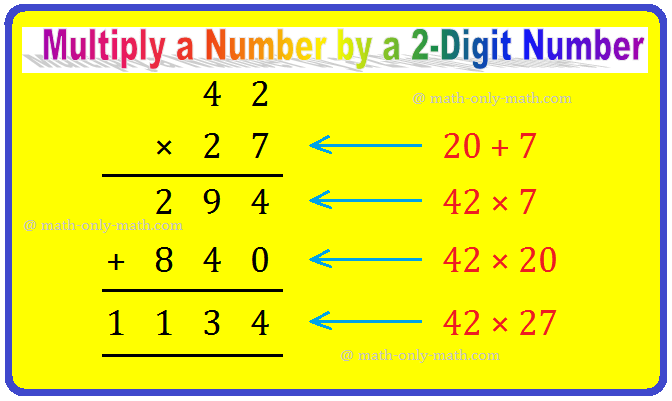Sexagesimal, Centesimal and Circular Systems
We know, Sexagesimal, Centesimal and Circular Systems are the three different systems of measuring angles. Sexagesimal system is also known as English system and centesimal system is known as French system.
To convert the one system to the other system its very necessary to know the relation among the Sexagesimal system, Centesimal system and Circular system.
The relation between Sexagesimal, Centesimal and Circular systems are discussed below:
Since 90° = 1 right angle, hence, 180° = 2 right angles.Again, 100g = 1 right angle; hence, 200g = 2 right angles.
And, πc = 2 right angles.
Therefore, 180° = 200g = πc.
Let, D°, Gg and Rc be the sexagesimal, centesimal and circular measures respectively of a given angle.
Now, 90° = 1 right angle
Therefore, 1° = 1/90 right angle
Therefore, D° = D/90 right angle
Again, 100g = 1 right angle
Therefore, 1g = 1/100 right angle
Therefore, Gg = G/100 right angle.
And, 1c = 2/π right angle
Therefore, Rc = 2R/π right angle.
Therefore we have,
D/90 = G/100 = 2R/π
or,
D/180 = G/200 = R/π
1. The circular measure of an angle is π/8; find its value in sexagesimal and centesimal systems.
Solution:
πc/8= 180°/8, [Since, πc = 180°)
= 22°30'
Again, πc/8
= 200g/8 [Since, πc = 200g)
= 25g
Therefore, the sexagesimal and centesimal measures of the angle πc/8 are 22°30' and 25g respectively.
2. Find in sexagesimal, centesimal and circular units an internal angle of a regular Hexagon.
Solution:
We know that the sum of the internal angles of a polygon of n sides = (2n - 4) rt. angles.
Therefore, the sum of the six internal angles of a regular pentagon = (2 × 6 - 4) = 8 rt. angles.
Hence, each internal angle of the Hexagon = 8/6 rt. angles. = 4/3 rt. angles.
Therefore,
each internal angle of the regular Hexagon in sexagesimal system
measures 4/3 × 90°, (Since, 1 rt. angle = 90°) = 120°;
In centesimal system measures
4/3 × 100g (Since, 1 rt. angle = 100g)= (400/3)g
= 1331/3
and in circular system measures (4/3 × π/2)c, (Since, 1 rt. angle = πc/2)
= (2π/3)c.
3. The angles of a triangle are in A. P. If the greatest and the least are in the ratio 5 : 2, find the angles of the triangle in radian.
Solution:
Let (a - d), a and (a + d) radians (which are in A. P.) be the angles of the triangle where a> 0 and d > 0.
Then, a - d + a + a + d = π, (Since, the sum of the three angles of a triangle = 180° = π radian)
or, 3a = π
or, a = π/3.
By problem, we have,
(a + d)/(a – d) = 5/2
or, 5(a – d) = 2(a + d)
or, 5a - 5d = 2a + 2d.
or, 5a – 2a = 2d + 5d
or, 3a = 7d
or, 7d = 3a
or, d = (3/7)a
or, d = (3/7) × ( π/3)
or, d = π/7
Therefore, the required angles of the triangle are (π/3- π/7), π/3 and (π/3 + π/7) radians
i.e., 4π/21, π/3 and 10π/21 radians.
● Measurement of Angles
- Sign of Angles
- Trigonometric Angles
- Measure of Angles in Trigonometry
- Systems of Measuring Angles
- Important Properties on Circle
- S is Equal to R Theta
- Sexagesimal, Centesimal and Circular Systems
- Convert the Systems of Measuring Angles
- Convert Circular Measure
- Convert into Radian
- Problems Based on Systems of Measuring Angles
- Length of an Arc
- Problems based on S R Theta Formula
From Sexagesimal Centesimal and Circular Systems to HOME PAGE
Didn't find what you were looking for? Or want to know more information about Math Only Math. Use this Google Search to find what you need.
Recent Articles
-
Properties of Multiplication and Division of Fractions Worksheet | Ans
Apr 10, 25 03:17 PM
In properties of multiplication and division of fractions worksheet you will get different types of questions based on properties of multiplication of fractional numbers and properties of division of… -
Word Problems on Fraction | Math Fraction Word Problems |Fraction Math
Apr 09, 25 01:44 AM
In word problems on fraction we will solve different types of problems on multiplication of fractional numbers and division of fractional numbers. -
Multiply a Number by a 2-Digit Number | Multiplying 2-Digit by 2-Digit
Apr 08, 25 01:13 PM
How to multiply a number by a 2-digit number? We shall revise here to multiply 2-digit and 3-digit numbers by a 2-digit number (multiplier) as well as learn another procedure for the multiplication of… -
Multiplication | How to Multiply a One, Two or Three-digit Number?
Apr 08, 25 01:08 PM
In multiplication we know how to multiply a one, two or three-digit number by another 1 or 2-digit number. We also know how to multiply a four-digit number by a 2-digit number. We also know the differ… -
Addition of 4-Digit Numbers | 4-Digit Addition |Adding 4-Digit Numbers
Apr 08, 25 12:43 PM
We will learn about the addition of 4-digit numbers (without carrying and with carrying). We know how to add 2 or 3, 3-digit numbers without carrying or with carrying.



New! Comments
Have your say about what you just read! Leave me a comment in the box below. Ask a Question or Answer a Question.